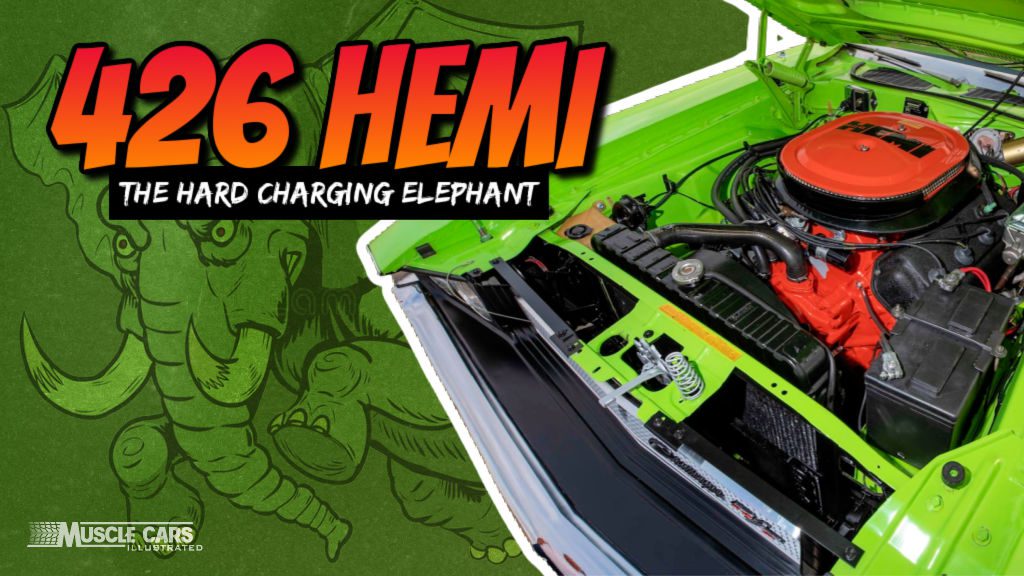
When pistons packed a punch, the 426 Hemi engine was the beating heart of some of the most formidable Mopar muscle cars from 1966 to 1971.
This legendary engine’s groundbreaking hemispherical design and unparalleled performance solidified it as one of the mightiest muscle car engines.
The 426 Hemi engine, known as the elephant motor, is recognized for its immense size and weight. Despite the aluminum cylinder heads, the cast iron block contributes to the 426’s staggering 843-pound dry weight. It was Mopar’s second attempt at designing an engine with a hemispherical combustion chamber after the first generation FirePower “Hemis” in the 1950s.
So, if you’re eager to uncover the secrets behind the power and legacy of the 426 Hemi during the muscle car era of the 1960s and 1970s, stay with me for the ride.
Before we charge ahead, let’s take a moment to look at some key highlights.
Table of Contents
Key Highlights
| Year | Key Events |
|---|---|
| 1964 | 426 Hemi engine was released exclusively for racing purposes. |
| 1966 | The Dodge Charger was the first production vehicle to receive the engine. |
| 1968 | The Plymouth Roadrunner was introduced with a 426 Hemi engine. |
| 1969-1970 | The Dodge Charger Daytona and Plymouth Superbird were released as homologation vehicles for NASCAR. |
| 1970 | The 426 Hemi was available in the Plymouth Cuda and Dodge Challenger. |
| 1971 | Last year the 426 was offered as an option in a production vehicle. |
Next, let’s look at the engine’s legendary history.
A Brief History of the 426 Hemi Engine
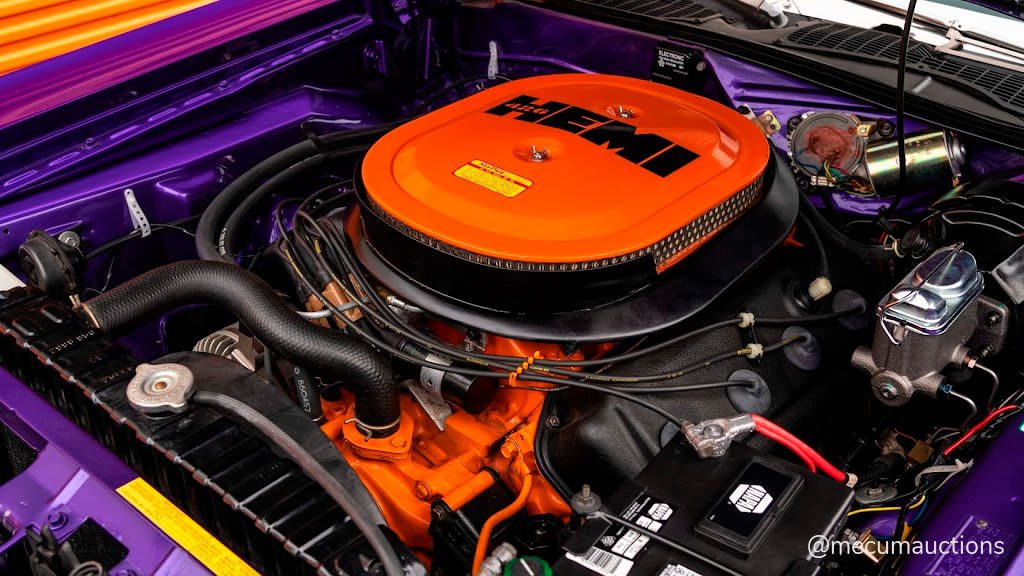
The Hemi engine design originated in the 1940s for airplanes and was used in Mopar production and racing vehicles from the 1950s. Hemispherical combustion chambers and opposed-angle valves were discovered to increase combustion efficiency and exhaust cooling properties.
The first-generation Hemi engines were available from 1951 to 1958 in various sizes, with different names such as FirePower, Red Ram, and Super Red Ram. Chryslers featured 331, 352, to 392 cubic inches, while Dodge offered the 241, 270, 315, and 325 cubic inch versions. The brand name “Hemi” was introduced in 1964.
Plymouth developed the second-generation 426 Hemi in 1963 as a racing engine for NASCAR. It was used to dominate the sport, culminating in a sweep of the Daytona 500 in 1964. A street version was released in 1966, and production ended in 1971.
The Hemi’s hemispherical design increases thermal efficiency and peak pressure by reducing internal combustion surface area. The valve design allows larger intake and exhaust valves, limited to two per cylinder due to their 58.5-degree opposite positioning.
The street version produced 425 horsepower at 5,000 RPM and 490 lb-ft of torque at 4,000 RPM with inline 2×4-bbl carburetors, 10:25:1 compression, and cast iron exhaust manifolds. A racing version with 12:1 compression and a more aggressive cam advertised the same horsepower and torque.
Before the 426 Hemi was available to the public, it first needed to be homologated for racing purposes.

Get The Top 50 Fastest Muscle Cars chart. Includes year, model, engine, 1/4 mile times, and more—absolutely free!
Hemi’s Homologation Success
The 426 Hemi was homologated. In motorsports, homologation is a process where a vehicle or engine must be produced in a certain number of units for road use before it can be eligible for competition. Chrysler homologated the engine for both NASCAR and drag racing purposes.
For NASCAR, in the 1960s, the governing body required manufacturers to produce a minimum of 500 units of a specific engine to be eligible for competition. Chrysler met this requirement by producing the street version of the Hemi for use in their muscle cars, making it legal for NASCAR competition.
The engine was also homologated for drag racing, with Chrysler producing the required units in their Super Stock drag racing cars. This allowed them to compete in the NHRA Super Stock and other drag racing classes.
In both cases, homologation of the 426 Hemi engine enabled Chrysler to compete in various motorsports events, where the engine became renowned for its performance and dominance.
After the successful racing homologation of the 426 Hemi, the engine was made available to the public in various factory-produced muscle cars.
Cars with the 426 Hemi Engine Under the Hood
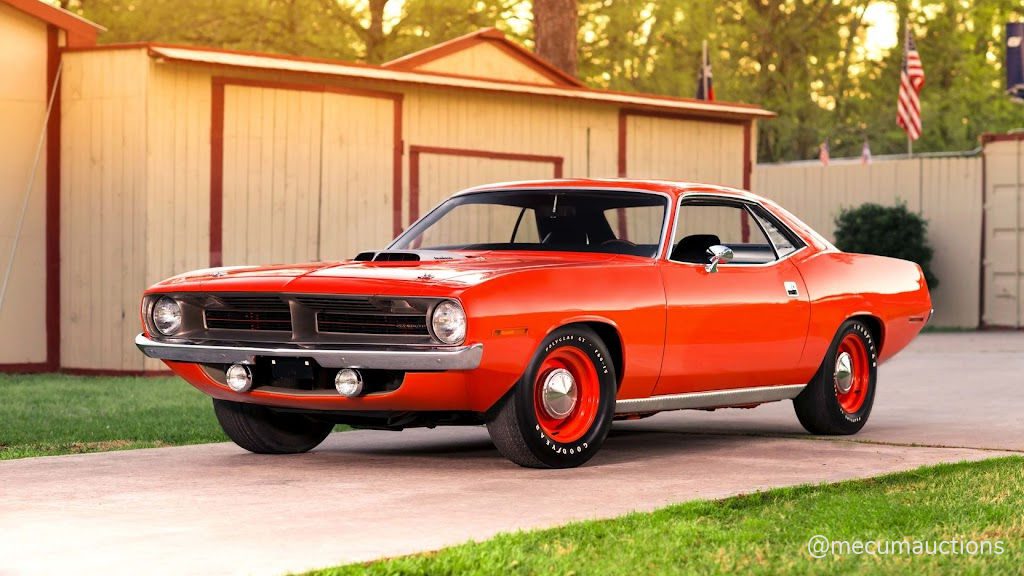
In the 1960s and 1970s, the 426 Hemi big block engine was a more costly option than its small block Mopar siblings.
On average, adding a Hemi during this period would increase the price by roughly $1,000, making it out of reach for most buyers. The average cost of a new car back then was around $3,000 to $4,000, representing a significant premium.
However, the 426 Hemi’s added performance and legendary status made it a desirable option for many enthusiasts despite the high insurance premiums and maintenance required for daily driving.
Here are the Mopar muscle cars with a Hemi under the hood from the factory:
- 1966-1967 Plymouth Belvedere
- 1966-1967 Plymouth Satellite
- 1966-1970 Dodge Coronet
- 1966-1971 Dodge Charger
- 1967-1971 Plymouth GTX
- 1968 Plymouth Barracuda SuperStock
- 1968 Dodge Dart SuperStock
- 1968-1971 Plymouth Roadrunner
- 1968-1971 Dodge Super Bee
- 1969 Dodge Charger Daytona
- 1969-1971 Dodge Charger
- 1970-1971 Plymouth Cuda
Many of these vehicles are now highly sought after, such as the 1971 Hemi Barracuda convertible, which sold for $3.5 million in 2014. Hemi Charger R/Ts are also known to sell for six-figure amounts.
While the factory production vehicles featuring the 426 Hemi were impressive, the racing Hemi truly demonstrated the engine’s power and dominance on the track.
Street Hemi vs. Race Hemi
Chrysler created two versions of the 7.0L Hemi engine for race and street applications.
The race Hemi was exclusively used in Mopar’s NASCAR performance vehicles in the 1964 season and then shelved until 1966 when the street 426 Hemi engine was produced.
The race Hemi’s aggressive performance cam and high 12.5:1 compression ratio made it unsuitable for street use.
The street Hemi had forged, lower compression pistons with a 10.25:1 compression ratio and used two Carter four-barrel carburetors. It also featured cast iron heads, a tamer camshaft, and softer valve springs for better street driving.
426 Hemi Engine Specs
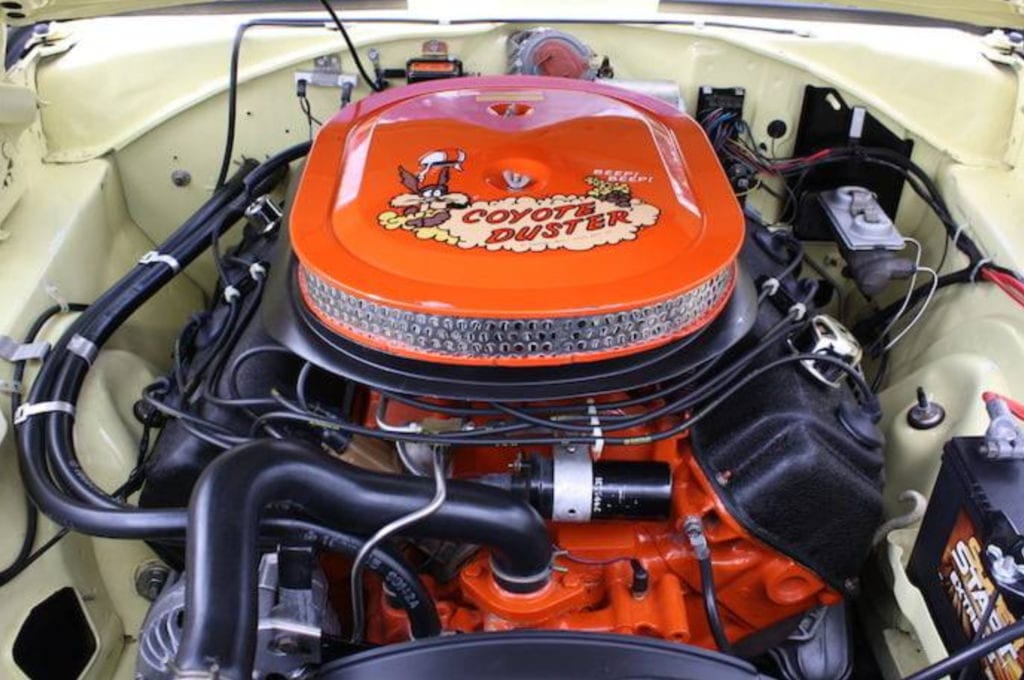
Below are the street and race 426 Hemi engine specifications, including displacement, block/heads, configuration, bore x stroke, compression ratio, firing order, engine weight, horsepower, and torque.
| Specification | Street 426 Hemi | Race 426 Hemi |
|---|---|---|
| Displacement | 426 cubic inches | 426 cubic inches |
| Carburetion | 2x Carter 4bbl 625 cfm | 2x Carter 4bbl 625 cfm |
| Block/Heads | Cast Iron / Aluminum | Cast Iron / Aluminum |
| Configuration | Naturally Aspirated V8 with OHV Hemispherical Combustion Chambers | Naturally Aspirated V8 with OHV Hemispherical Combustion Chambers |
| Bore x Stroke | 4.25″ x 3.75″ | 4.25″ x 3.75″ |
| Compression Ratio | 10.25:1 | 12.5:1 |
| Firing Order | 1-8-4-3-6-5-7-2 | 1-8-4-3-6-5-7-2 |
| Engine Weight | 843 lbs (Approximately) | 843 lbs (Approximately) |
| Max Horsepower | 425 hp @ 5000 RPM | 425 hp @ 5000 RPM |
| Max Torque | 490 lb-ft @ 4000 RPM | 490 lb-ft @ 4000 RPM |
The 426 Hemi engine for street vehicles was equipped with twin Carter 4-barrel carburetors, each with a 4-bolt flange and 625 cubic feet per minute (cfm) rating, resulting in 1250 cfm. The carburetors were positioned in front of one another on the intake manifold. The racing Hemi engines from 1964 and 1965 featured a cross-ram intake manifold with dual 4-barrel carburetors. The carburetor configurations played a significant role in the engine’s performance capabilities and contributed to its success in racing.
Dominating NASCAR with 426 Hemi Power
The Mopar 426 Hemi engine significantly impacted NASCAR during the 1960s and 1970s. Here are a few notable drivers, their vehicles, and some of their accomplishments in NASCAR:
- Richard Petty: Arguably, one of the most famous NASCAR drivers, Richard Petty, also known as “The King,” drove a Plymouth Belvedere in the 1966 and 1967 seasons. Petty won the 1966 and 1967 Daytona 500 races and numerous others, contributing to his seven NASCAR championships.
- Bobby Isaac: Isaac raced in his 1969 Dodge Charger Daytona and won the 1970 NASCAR Grand National Championship with 11 victories and record-breaking 20 pole positions in a single season.
- Buddy Baker: Baker was the first to break the 200 mph barrier on a closed course while driving a Dodge Charger Daytona in 1970 at the Talladega Superspeedway. He also won the 1970 Southern 500 and the 1972 Daytona 500 with the 426 Hemi.
These are just a few examples of drivers who raced with the powerful 426 Hemi engine in NASCAR and achieved impressive results. The engine’s dominance in the sport led to NASCAR eventually changing its regulations, forcing manufacturers to produce more engines for street use to be eligible for competition.
The 426 Hemi Engine’s Reign in NHRA Racing
The 426 Hemi-powered Dodge and Plymouth vehicles dominated the NHRA Super Stock class in the mid-1960s, winning numerous national events and three consecutive championships from 1964 to 1966. Check out some standout NHRA Super Stock drivers, their rides, and noteworthy achievements:
- Dick Landy: Landy drove a 1964 Dodge 330, winning the 1964 U.S. Nationals in Super Stock and setting the national record for elapsed time (ET). He won numerous races in his Hemi-powered Dodge vehicles, becoming one of the most successful drag racers of the 1960s.
- Butch Leal: Leal drove a 1968 Plymouth Barracuda and won the 1972 Winternationals in Pro Stock, defeating Bill “Grumpy” Jenkins. He raced in NHRA and IHRA events throughout the 1970s and 1980s, winning multiple races and setting records.
- Sox and Martin: Ronnie Sox and Buddy Martin drove a 1968 Plymouth Barracuda, winning the 1968 Super Stock Nationals in the Hemi-powered Barracuda, defeating Bill “Grumpy” Jenkins. They set multiple records in their Hemi-powered Plymouth vehicles and became one of the most successful teams in drag racing history.
The Hemi’s success in Super Stock helped cement its reputation as a dominant racing engine and popularized it among drag racers and performance enthusiasts.
How Fast is a 426 Hemi?
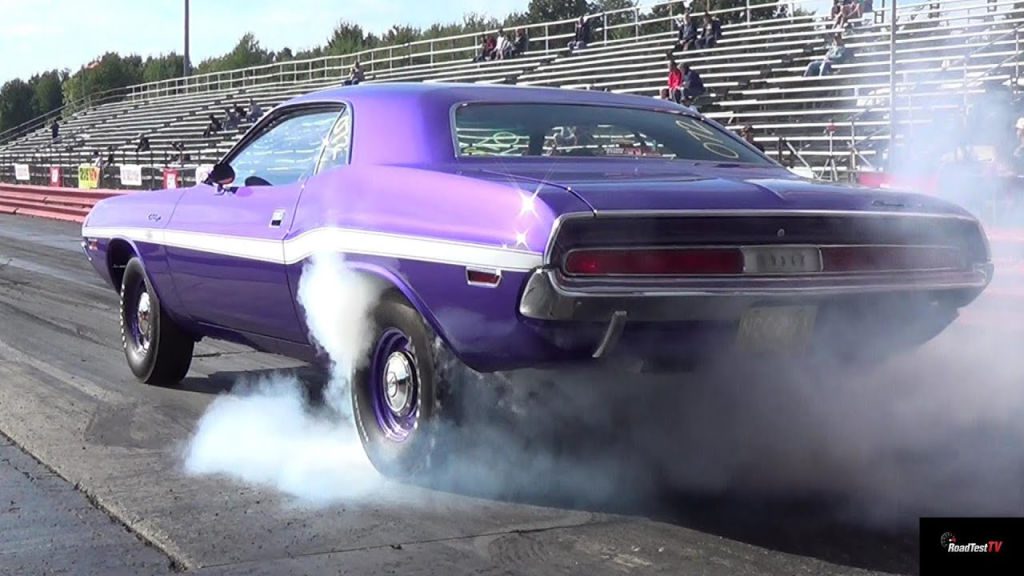
While the 426 Hemi may not seem overly impressive by current benchmarks, its performance during its heyday was nothing short of astonishing.
The 426 Hemi’s street versions had quarter-mile elapsed times ranging from low 13s to low 14s, with speeds up to 110 miles per hour. Racing versions recorded times as low as 9 seconds elapsed, hitting speeds up to 140 miles per hour.
In the context of the 1960s and 1970s, this hard-charging elephant was undoubtedly one of the fastest vehicles you could own straight from the showroom floor.
Related Questions
“Hemi” is short for “hemispherical,” referring to the design of the engine’s hemispherical combustion chambers. Chrysler owns the trademark for the term and is associated with engines built by Chrysler. Chrysler’s Hemi engines are known for their large size, high horsepower, and torque.
The cost of a 426 engine during the muscle car era would result in a price hike of $900 to $1,200, varying based on the particular model and production year.
It has an engine displacement of 426 cubic inches, translating to a 7.0-liter engine when expressed in liters.
The engine’s weight can vary depending on the specific components used, but it generally weighs around 843 pounds (approximately 382 kilograms), including the block and heads.
A stock 426 Hemi engine for the street is rated at 425 horsepower at 5,000 RPM.
The fastest 426 Hemi is the 1970 Plymouth Cuda, which clocked a 13.10-second quarter-mile while reaching 107.1 miles per hour, as reported in the November 1969 issue of Car Craft magazine.
The 426 Hemi is nicknamed the “elephant engine” due to its massive power, size, and weight, stemming from the large displacement and cylinder heads.
The 426 Hemi was available with the A833 four-speed manual and the heavy-duty 727 Torquflite automatic.
The differential used in cars with a 426 Hemi varied depending on the make and model. Some cars had an 8¾-inch Sure Grip differential, while others had a Dana 60 differential. These differentials were chosen for their strength and durability, as the Hemi produced a lot of torque and power.
Conclusion
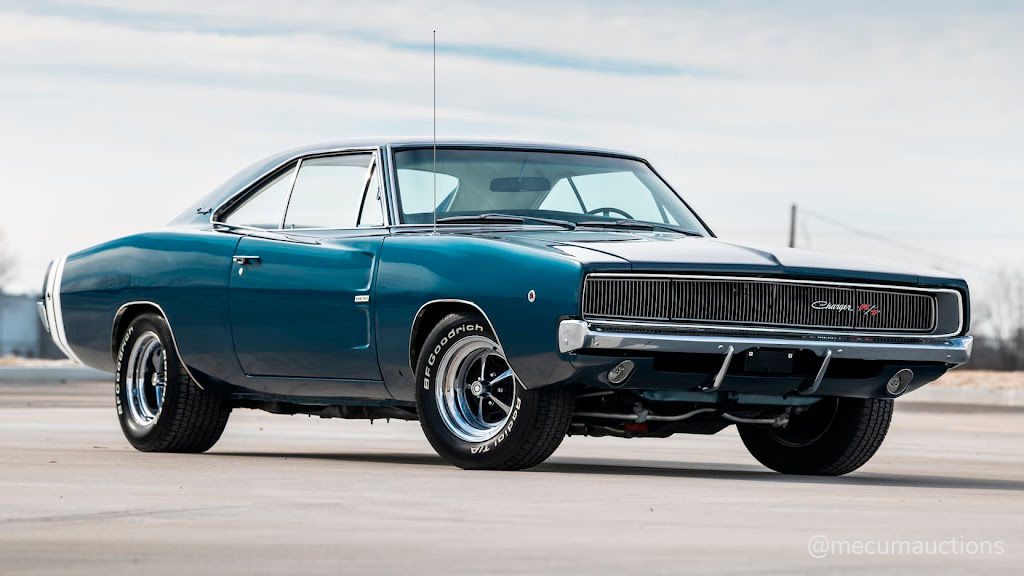
Chrysler’s 426 Hemi engine has etched its name into the annals of automotive history as an iconic powerhouse that revolutionized the muscle car era.
This legendary engine’s street and race versions showcased Chrysler’s commitment to engineering excellence, offering unrivaled performance and speed for their time.
The street version delivered exhilarating driving experiences, turning heads and leaving an indelible mark on the American car culture.
Meanwhile, the race version secured its place in the pantheon of motorsports legends, dominating the tracks and pushing the limits of engineering prowess.
This engine’s legacy transcends mere horsepower and torque figures. It represents an era of raw, unbridled passion for performance and innovation of the 1960s and 1970s.
While modern engines may boast higher numbers, the 426 Hemi engine will always hold a special place in the hearts of Mopar enthusiasts and stand as a symbol of America’s golden age of muscle.

Ryan Wheaton
Ryan has owned muscle cars since 1986 and currently owns a 1972 Dodge Charger Rallye. He combines passion and experience to create engaging content for fellow muscle car enthusiasts. In 2018, he founded Muscle Cars Illustrated, authoring hundreds of articles on tips, history, and trends in the muscle car industry. He attends national car shows, auctions, and museums to stay current with the latest developments in the muscle car industry.
